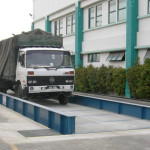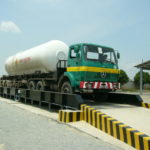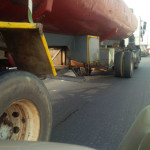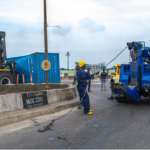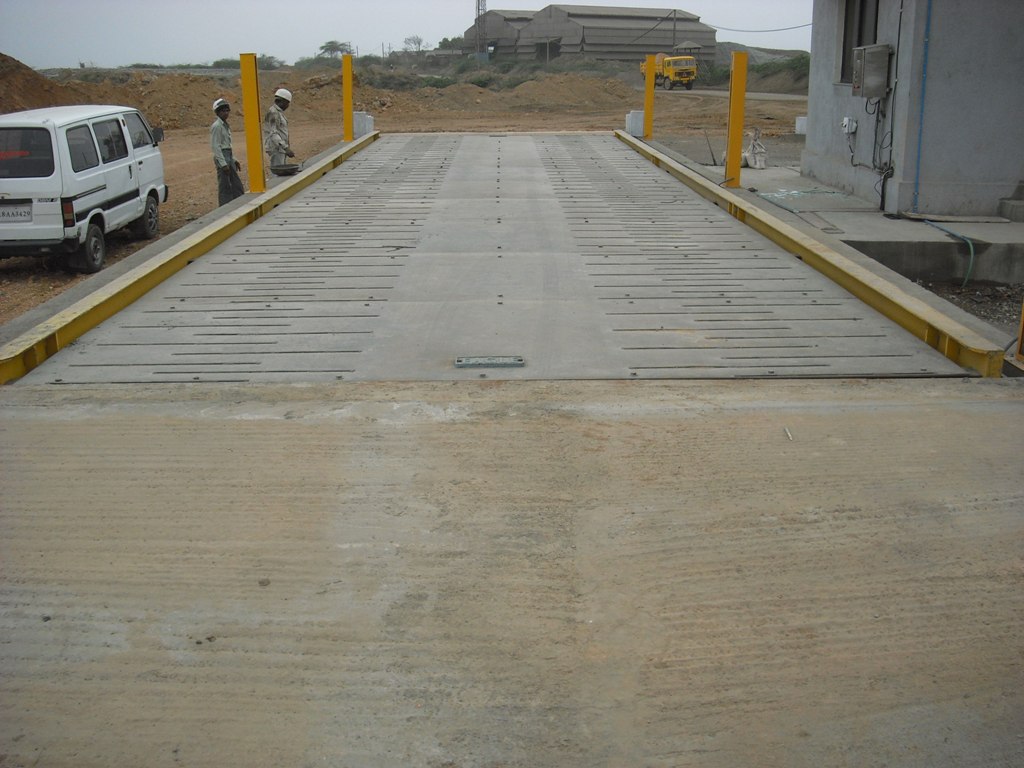
PROLOGUE: REAL-LIFE EXPERIENCE ASSOCIATED WITH WEIGHING SYSTEMS
Recently, a concrete making firm decided to overhaul the personnel manning its weighbridge system which had been installed for the purpose of receiving cement delivery, a critical raw material in its production process. The cement delivery to the firm usually comes in 30ton (approximate) bulk cement tankers. The findings they made in the first week of operation of the new team were shocking to say the least.
In a random check of about five (5) bulk cement tankers waiting in line to weigh-in to make deliveries, the following astonishing discoveries were made:
– One truck had 10Nos 50litre kegs fully loaded with water stacked in the sleeper cabin
– Another had 5 Nos. adult males delicately concealed in the sleeper cabin with curtains drawn to avert attention (each weighed an average of 70kg and made up of peer drivers and motor boys who had earlier been weighed in but awaiting offloading).
– The third truck had 7 nos. heavy steel bars (with each weighing an average of 45kg) concealed in the battery compartment at the rear of the cement tanker.
– Yet another, upon very close scrutiny was discovered to have a reserve diesel tank (which normally would have diesel in it were the journey to be longer) fully filled with water.
The objective of the whole deception described above is to create a false payload weight for products that had probably been substantially pilfered along the way. While comprehensive investigation is still on-going, the initial finding affirms that some character deficient drivers have perfected the art of bypassing the tamper-proof seals on most tankers to pilfer products en-route delivery locations. Whether these nefarious acts have the tacit or collusive support of some elements within the loading section of the cement manufacturing company is yet to be firmly established. However, this is not the subject of our focus in this article.
The above experience is only being shared to drive home the seriousness associated with the topic that is under focus in this write-up: ‘Weighbridges: Functionality and Accuracy’.
INTRODUCTION
Weighing systems can take several forms but the most common design includes one or more load cells that support (or suspend) a platform (or weigh vessel), a junction box, and a weigh controller. When a weight is applied to the platform, a portion of the load is transmitted to each load cell. Each load cell sends an electrical signal to the weigh controller via the junction box which sums the signals from a number of cells. The weigh controller converts the summed signals to a weight reading.
One of the most common weighing systems used in the bulk transportation industry is the weighbridge. Weighbridges are used throughout the world as a way of quickly assessing the weight that a truck or train is carrying.
An opinion often voiced is that a weighbridge is just a weighbridge, suggesting that they are seen as simple pieces of equipment that carry out a simple task. Aside from the increasing tendency of an average Nigerian truck driver to capitalize on a faulty weighing system, reports abound within the Nigeria haulage scene of customers complaining about the loss of huge sums of money as a result of inaccurate weighing scales. So it seems appropriate to look at weighbridge function and technology in more detail, as a little knowledge could go a long way in helping weighbridge owners and operators to make the right investment, save their companies money and preserve corporate integrity.
A Weighbridge is a scaling device mostly used by heavy duty vehicles to know the volume of whatsoever a truck, trailer or tanker is carrying. Made of steel or concrete (or a mixture of the two), a weighbridge is essentially a big set of ‘bathroom scales’ for trucks that connects to a readout (the digital weight indicator) which shows the weight. The system provides for the weighing of goods by vehicle load and allows companies to charge customers by weight of load supplied or delivered.
The description is straightforward, but the technology to achieve the function is innovative and highly precise.
The accuracy and reliability of a weighbridge system is of paramount importance. Inaccurate weighing (i.e. too light or too heavy) could be causing profits to dwindle or may result in overcharging and risk ill will, lost customers and litigation problems. It is worth remembering that it is the weighbridge owner who is responsible for ensuring that the equipment is legal for trade use and maintained as such. Failure to do so makes the weighbridge owner/operating company liable to prosecution, not the weighing company. As a minimum quality control strategy, an approved system (for trade use) found to be weighing out of tolerance should be shut down until it is repaired, re-calibrated and re-verified. But the resultant effect goes beyond the loss of money. It could also effectively prevent a company or site from trading.
A weighbridge is, ideally, built to weigh a fully loaded truck in a single weighing with a high degree of accuracy. This can sometimes be difficult in an industry like forestry (especially for off-highway operations) where “over-weight”, “over-length” loads can weigh over 100 tons and be over 45 meters long with triple trailer configurations. Weighbridges rated up to 60 tons and 21 meters or less in length are more likely to be used for on-highway legal loads.
In the operation of the weighbridge systems, three weight readings are critical and they are:
- Payload Weight
- Gross Weight
- Tare Weight
The weight of the payload, including the weight of the truck, is measured by first driving the truck onto the weighbridge; this weight is referred to as the gross weight. To obtain the weight of the payload (the net weight), the tare weight (the weight of the empty truck) must then be subtracted from the gross weight.
Inaccuracy in payload weights can be created by either inaccurate gross weights or variability between the tare weight of the truck and the actual weight of the truck (gross weight minus payload) at the time of gross weighing. The latter can be minimized by re-tareing the truck immediately before the truck is loaded or immediately after the truck is unloaded. This is common practice in industries where the weighbridge is close to either the loading or unloading area; for example, in a quarry or milk factory.
In short, a weighbridge must sustain accuracy over the long term. It must be designed to achieve reliability and be durable enough to cope with the harshest of site conditions and environments. It is therefore useful to look at how a weighbridge achieves this task through certain design criteria and the factors which contribute to weighing errors, downtime or unnecessary repairs.
HOW WEIGHBRIDGE WORKS
The weight of the load on the weighbridge is measured by the load-cells — the highly accurate transducers that form the heart of any weighing system. Using strain gauges bonded on to a precisely machined element that deforms under load, they convert a small resistance change into a usable electrical signal. This signal is then filtered, calibrated and digitally displayed by the indicator.
The wrong load-cell choice together with inferior assembly and weighbridge design can result in poor performance, regular failures and huge losses in revenue. Compression load-cells are the most popular choice for weighbridges, and multi-column products sustain their accuracy and offer a low-profile reliable solution.
Owing to the precision engineering element of load-cells, the environment surrounding them has to be suitably controlled as weighing errors or load-cell failures may occur. This is especially relevant as the load-cell itself is a particularly expensive component in a weighbridge system. In addition, replacement means additional costs associated with labour, re-calibration, hire of a weighbridge calibration unit and, in the case of trade-approved systems, re-verification. It is of paramount importance, therefore, that this element is protected to the utmost.
The most obvious weighing failure is often the result of a direct impact overload, i.e. when one or more load-cells have a load applied in excess of acceptable tolerances. The acceleration and momentum of vehicles often cause very large instantaneous loads to be applied to the weighbridge, far greater than the expected static load. In order to cope with this a weighbridge should be designed to withstand a considerable amount of overload. Generally, the higher the designed overload is, the more robust and accurate the weighing system will be. In other words, the theoretical maximum load that can be applied to a weighbridge before any damage can be sustained must be massively in excess of its rated capacity.
The weighbridge structure should also take into consideration the momentum created when a truck traverses and applies its brakes on the deck. As kinetic forces are transferred from the deck to the ground, it is important to avoid transmitting these forces through the load-cells. Typically, most weighbridge decks ‘float’. However, the key design criteria should allow freedom to ‘float’ but restrict movement to the absolute minimum, thereby preventing damage from these kinetic forces. An essential requirement on any high-tech, high-quality weighbridge is a restraining mechanism which can disperse these forces away from the load-cells and mountings. Inadequate or faulty restraint systems can result in excessive movement of the weighbridge deck, thereby magnifying these forces to a destructive level that can seriously affect the structural integrity of both the weighbridge and the foundations, not to mention the accuracy.
…………To be Continued in Part Two.


